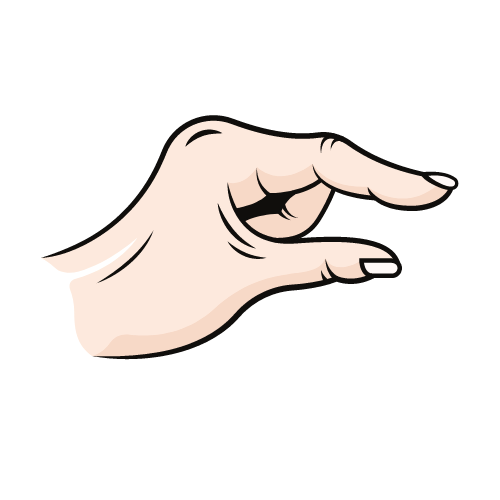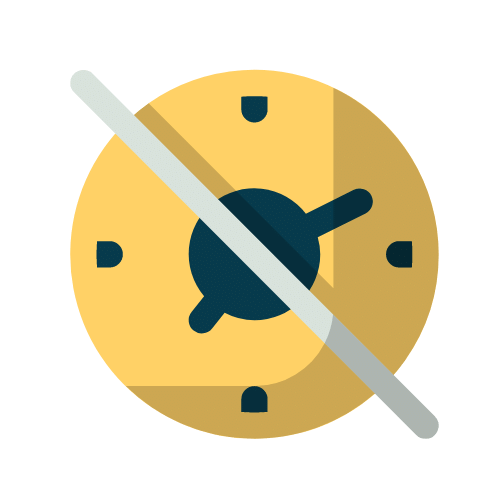How Long Does It Take to Learn Guitar?

You can learn how to play the guitar, but how long does it take to learn it? How many hours do you need to practice? Find out the answers here.
When picking up a new instrument, start with goals. Where do you want to be in three months, six months, or a year? What milestones should you achieve? On average, how long it takes to learn guitar?
Every musician’s journey differs, but anyone can learn to play the guitar. Some pick it up at lightning speed, while others need more time. However, you can reach your end goal by setting your pace and sticking to it. Slow and steady wins the race, right?
We’ve broken down the guitarist’s first year into small soundbites. These realistic mile markers can help you set goals and start you off on the path to becoming an expert guitarist.
Become a guitarist: Year one.
Want to learn to play the guitar? The first year is a learning curve for beginners. Once you have all the basics, you can start fine-tuning your skills.

Your first month
Starting, you probably won’t sit down and play a guitar solo like Slash. Some of the simple steps may seem tedious at first. However, the foundation you lay at the beginning of your journey is crucial to your future success.
In the first month, you want to focus less on speed and more on accuracy. Here are a few goals to achieve in the first month:
- The proper guitar posture and finger positions.
- Deciphering guitar chord charts
- Playing open-string chords
- Tuning the guitar strings
- Guitar Anatomy

Months 1-3
You can practice some of the most common open chords in the first three months of learning guitar. Playing the full version of a chord can be complicated for beginners. So, instead, start by practicing chords such as Am7, Cmaj7, Dsus2, and G6.
These simple chords sound great but only require you to play two frets. As you build confidence on the guitar, you can flesh out these chords with more notes.
Learn the correct finger positions for chords. The long-term goal is to play by feeling instead of watching your fingers. Practice moving smoothly from one chord to the next. You can even say the chord names out loud to remember their positions. Once you feel comfortable with two chords, add one more.
Also, you want to work on rhythm and strum patterns in your first three months of playing guitar. You can tap one foot on the floor to help you keep rhythm or use a metronome for accuracy. The strum patterns can vary depending on the song and the genre of music. If you are practicing a well-known song, look up the song on YouTube to see which strum patterns other guitarists use.

Months 3-6
The guitar posture and finger positions should begin to feel natural in three to six months. You probably have some finger callouses and know a few chord patterns. Also, your ear should let you know when your guitar starts sounding out of tune.
If you are not committed to playing the guitar, this three-month period is when you may be ready to throw in the towel. Some of the “honeymoon phase” of learning a new instrument is over, and you have to buckle down to work.
However, if you stick to your practice sessions, this period is where you can start to make real progress. You want to continue to add to your chord repertoire. Also, you can flesh out some of the simple chords you have been practicing and achieve a fuller sound.
Practice new songs that stretch your skills.

Months 6-12
Once you play the guitar for six months, you build confidence in your skills. You should know many common chords and be able to pick out new pieces fairly quickly.
At this point, you are ready to dig deeper into guitar theory. Before you begin practicing a new piece, try playing guitar scales first. This makes your fingers nimble and increases your accuracy on the frets. You can also work on improvisation and guitar solos. Play the guitar with other musicians to learn new techniques and put your skills to the test.
How long does it take to become…
A beginner
Most consider the first nine to twelve months of playing guitar to be beginner-level. However, as the months go by, you can slowly and steadily increase your skills.
If you are a guitar beginner, you should set aside about 30 minutes daily for practice. Playing for a short amount of time regularly is more helpful than sitting down for three hours once a week.
As you practice, focus on mastering at least one skill or technique. Then you can steadily build on your knowledge.
You should be able to play one or two simple songs in the first month. You should have a handle on many chord progressions and strum patterns in the first six months. Once you pass the six-month mark, you should know enough about the guitar to play in front of others.
Intermediate
While you may keep a beginner status for the first year, you can advance to an intermediate level soon after the first twelve months. Most guitarists should obtain intermediate status in one to three years of regular practice.
Some intermediate guitar skills include power chords, open chords, scales, major and minor guitar modes, and improvisation.
Advanced
While an intermediate guitar player should practice scales, modes, and strum patterns, an advanced guitarist should master these skills. Most guitar players can become advanced in three to seven years.
As an advanced player, you should be able to feel the chords and make smooth chord progressions. Also, you should be able to add emotion as you play by using legato phrasing and smooth chord transitions. Start experimenting with improvisation and original arrangements.
Professional
After seven years of regular guitar playing, you can achieve a professional level. You should have solid skills on the guitar, good techniques, and expert knowledge of music theory. Improvisation should become second nature.
As a professional guitarist, you should also be comfortable performing in front of an audience.
A master
To become a master guitar player, you want to know the guitar like the back of your hand. Then, you should study under a master. This way, you can learn techniques from the greatest talent out there.
Most estimate that it takes at least thirteen years of serious practice to become a master guitar player. Your practice sessions by this point should be a few hours a day. This can add up to about 20,000 hours of intense guitar practice.
Common myths about learning guitar.
For every person who encourages you in your musical journey, there is someone out there ready to chime in with discouraging advice. We’re here to dispel the common myths about learning guitar and encourage you to follow your dreams.
Here are a few common myths you may hear:

It’s too late to learn the guitar.
Never say never! You always have room to grow and learn new skills.
While many think that learning guitar as an adult is more difficult many find the opposite true. With time management skills and motivation to learn, adults can often learn a new instrument faster than young students. If you want to play the guitar, no time is better than the present!

Know how to play by ear, or don’t play at all.
Many famous musicians were self-taught and picked up the guitar by ear. These instant success stories can intimidate those of us without the same incredible talent.
Some musicians imply that if you can’t pick up a guitar by ear, you shouldn’t pick it up at all. But that’s like saying that you can’t learn math if you aren’t Einstein.
You may have to put more hours of work in than someone with a gifted ear. However, even musicians with inherent talent need to learn music theory. Once you learn the correct positions, fingering, and basic music theory, you may even find that you are ahead of those who rely only on their natural skills to play guitar.

If you have small hands, you can’t play the guitar.
Having large hands can be an asset when it comes time to learn a new instrument. You have an easier time on the fretboard reaching the right chords. But you can’t help it if the gene pool didn’t gift you with large hands.
If you have small hands, your fingers must work harder to reach the right chords. The large fretboard on classical guitars makes stretches even more difficult for those with small hands.
So, can you still play the guitar? You can look at kid-size guitars and warm up with finger exercises and stretches before you play.
Also, check out Pepe Romaro’s guitar skills. This master guitarist is just a little over five feet tall and has smaller-than-average hands. Yet, he is a pro at the classical guitar and proof that anyone can play the guitar. Size doesn’t matter.

You don’t have time to practice guitar.
It is true that the more time you have to practice, the faster you can advance from a beginner to an expert guitar player. However, not everyone has hours a day to devote to learning a new instrument.
Playing the guitar is still possible even if you have little free time. Carve out short practice sessions and dedicate all your attention to the amount of time you do have. It may be 10, 20, or 30 minutes, but that’s okay. Mastering one chord or one concept in 10-minute sessions a day can have an exponential effect. Instead of waiting for the “perfect” moment, start with what you have.
Tips to speed up your learning process.
It is better to take it slow than to skip over critical theory techniques. However, if you want to fast-track your learning, there are a few ways to speed up the process.
1. Choose a practice space without distractions
Choose a quiet area to practice that is free from distractions. The perfect spot could be your bedroom, a university practice room, or any other quiet space you can concentrate. Turn the T.V. off and put your phone on silent mode so you can give the guitar all your attention.
2. Have the right tools
It is easier to learn a new instrument when you have the right tools on hand. Find a chair that is the right height and use a footstool. If you don’t have a footrest, you can use a stack of books. Make sure you have a pic if you are playing acoustic or electric. For classical, you want to pay attention to how you clip your nails. Find a book, program, online app, or teacher and start playing guitar.
3. Devote regular time to practice
Carve out a regular practice time. As a beginning guitarist, start with short practice sessions. Then after the callouses build on your fingers, you can increase the time you spend practicing. The more you practice, the more you can learn.
You can learn guitar in record time with a quiet place to learn, the right tools at your disposal, and regular practice.
Little by little.
It’s a great idea to set goals as you learn the guitar and estimate how quickly you can advance. Just keep in mind that every person learns at their own pace.
Whether you are in your first year of guitar or have put in 19,999 hours of practice, your hard work pays off. So, give yourself grace, learn from your mistakes, and let your passion for guitar playing shine through.
To organize your time and create more efficient practice sessions, download the app Simply Guitar. This app can guide you through the fundamentals of guitar and helps you advance to the next level.









